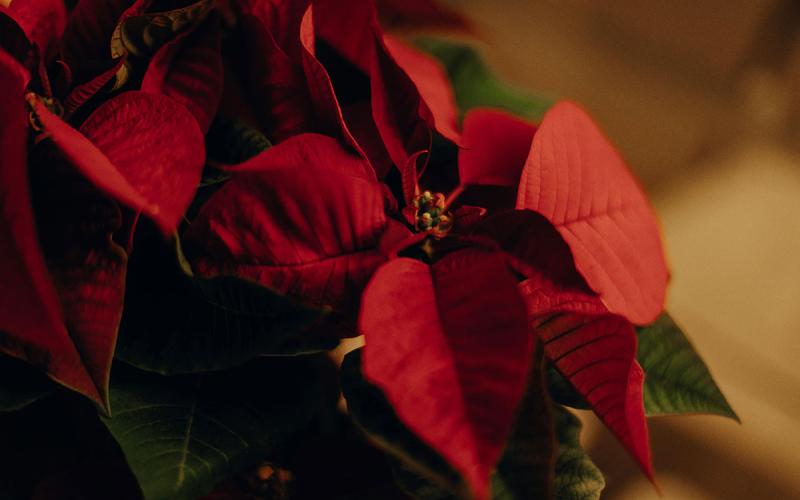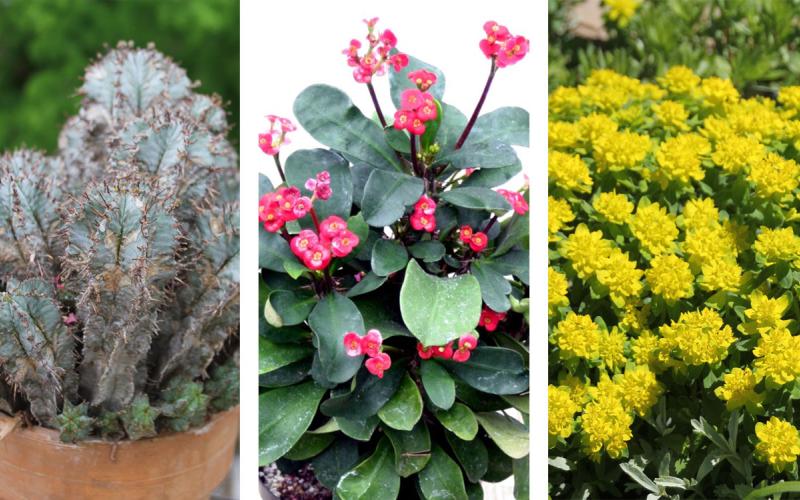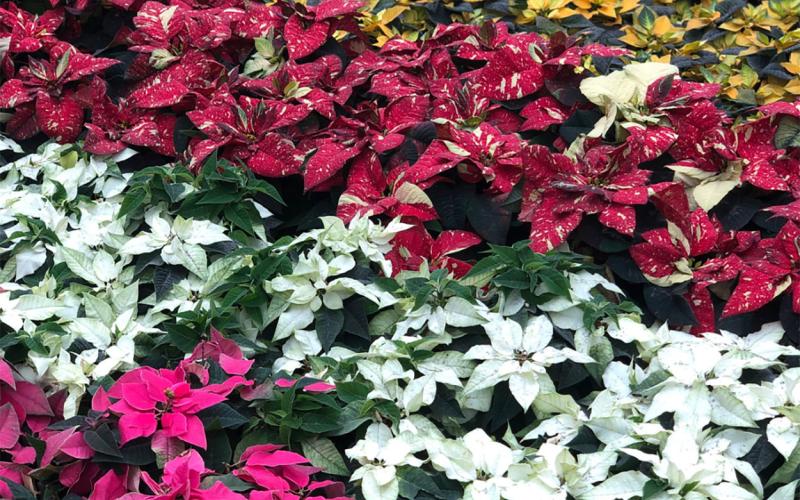Original article by David Graper, former SDSU Extension Horticulture Specialist and Master Gardener Program Coordinator. Updated by Vaughn Reints, SDSU Extension Horticulture Assistant; and Kristine Lang, Assistant Professor, Agronomy, Horticulture, and Plant Science. Special thanks to SDSU Extension Master Gardener Trainee, Max Peterson, for editorial review of this article.
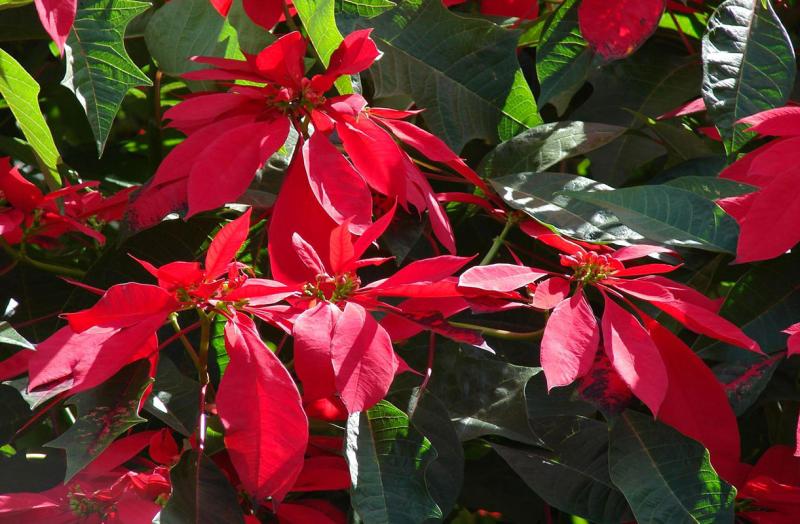
Poinsettia is a popular plant that, with the right care, can thrive year after year. The poinsettia needs enough light for its green leaves to continue to photosynthesize and produce the carbohydrates that the plant needs to grow.
Many plants are photoperiodic, which means they rely on cues from nature, like the shortening day or night, to change how they grow. For example, they may switch from producing leaf buds to producing flower buds. Many of our deciduous trees use the shortening day lengths to trigger the development of Fall leaf color and leaf-drop. Some vegetable crops, like onions, use our long summer days to stimulate the development of the bulb of an onion.
During the holiday season, many people celebrate by purchasing poinsettias, a plant that is very strongly photoperiodic. It needs long, daily dark periods to initiate flower buds and the coloring of the upper leaves or bracts. Many commercial growers use black-out cloths to cover benches or whole greenhouses of plants to assure that the plants get the required number of hours of dark for the appropriate number of weeks to get their poinsettias ready to sell at the right time. Commercial greenhouses also must address encroaching residential and commercial areas that are often well-lit at night. This stray light can delay a crop of poinsettias for several weeks, which is undesirable for a plant that depends on a holiday for its sale. Even walking down the aisle of a greenhouse at night with a flashlight can be enough to disturb the timing of a crop.
Plants use specialized processes to sense the length of the light or, more importantly, the length of the dark period. Phytochrome, a plant pigment that is affected by the length of the dark period, plays a key role in this process. When it is exposed to a long, dark cycle, it is changed into a different form that then interacts with other plant processes to stimulate a response within the plant. Greenhouse growers use lights that turn on in the middle of the night or at the end of the day to shorten the dark period. Doing so makes the phytochrome molecule change back to its other form. By manipulating the length of the dark and light cycles, growers manipulate the phytochrome to facilitate a desired plant response. Commercial greenhouse research took a huge leap forward when photoperiodicity in plants was discovered. Photoperiodicity made it possible to get common greenhouse crops, like chrysanthemums, to flower at any desired time of the year, instead of in Fall, when they would naturally bloom.
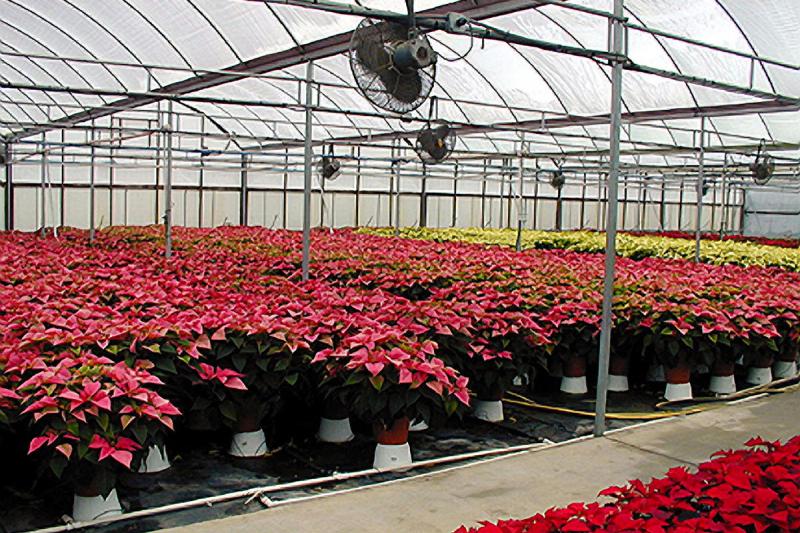
Photoperiodicity in plants continues to be a common topic of research in greenhouse and other horticultural crops, particularly as new plant species are commercially produced. Many plants have a much more complicated photoperiodic response than the common poinsettia or chrysanthemum. Temperature often modulates plants’ photoperiodic response. The photoperiodic response can be cumulative, such that the plant keeps track of how many light and dark cycles it perceives, before it will elicit a response. Photoperiodicity can also be bypassed in some plants by merely waiting. Eventually the plant will flower, but it will do so faster with the proper photoperiod.
Plant breeders also consider photoperiodicity in plants and often use it as a selection criterion in developing new varieties. Consider the onion example. Here, in the North, we typically grow long-day onions, varieties stimulated to produce bulbs during the long days of Summer. In Southern United States, however, short-day onions are grown, because they are often planted in Fall to get bulb stimulation during the shorter days of late Winter and early Spring. Planting short-day onions up here in the north would probably produce onion bulbs that are much smaller than the better-adapted long-day varieties. But now gardeners can buy day-neutral onion varieties that will grow and produce onion bulbs in either short or long days. So, take note of the type of onions and other vegetable seeds before selecting varieties to grow.
